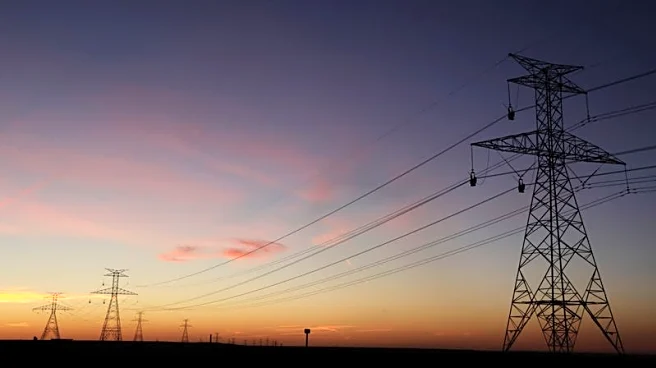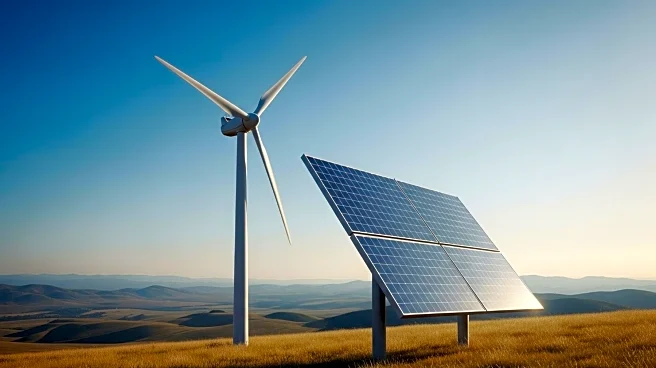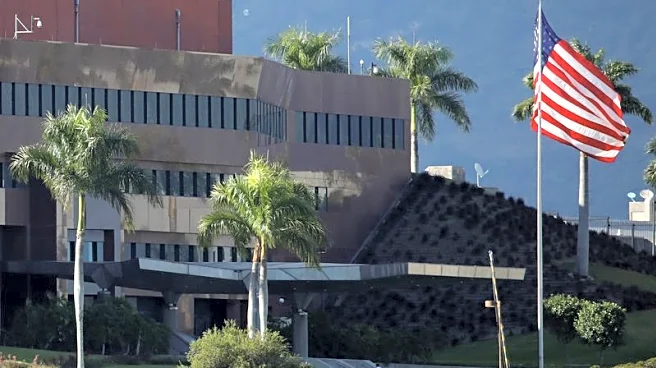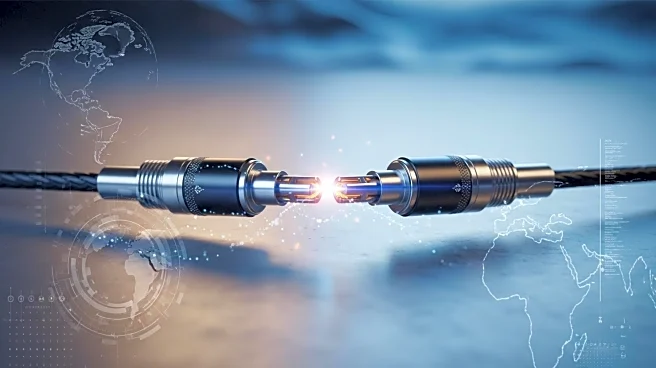What's Happening?
US electric companies are projected to invest nearly $208 billion in 2025 and over $1.1 trillion in the next five years to enhance the power grid infrastructure. This significant investment is driven by the increasing demand from data centers, artificial intelligence, and the broader electrification of the economy. According to the Edison Electric Institute, this spending marks a substantial increase compared to the $765 billion spent by investor-owned utilities in the previous five-year period. The growing requirements are putting the US power grid under strain, as noted by David Weeks, supply chain industry practice lead at Moody’s. Weeks highlighted that the escalating energy crisis in the United States could constrain various industries, necessitating companies to consider power-grid limitations and permitting delays in their supply chain planning.
Why It's Important?
The planned investment in the US power grid is crucial for supporting the infrastructure needed to meet the rising energy demands of emerging technologies like artificial intelligence. This development is expected to have a significant impact on various industries, potentially alleviating some of the constraints posed by the current energy crisis. Companies across the nation will need to adapt their strategies to account for power-grid limitations and potential delays in permitting processes. The investment also underscores the importance of modernizing the grid to ensure reliable and efficient energy distribution, which is vital for sustaining economic growth and technological advancement.
What's Next?
As electric companies prepare to implement these investments, stakeholders in the energy sector will likely focus on addressing the challenges associated with grid modernization. This includes navigating regulatory hurdles and ensuring the timely completion of infrastructure projects. Companies may also explore innovative solutions to optimize energy distribution and enhance grid resilience. The ongoing developments in the power grid could prompt further discussions among policymakers, industry leaders, and environmental groups regarding sustainable energy practices and the integration of renewable energy sources.
Beyond the Headlines
The substantial investment in the power grid may also have long-term implications for the workforce in the energy sector. As veteran lineworkers retire, there is a growing need to bridge the skills gap and prepare the future workforce to handle advanced digital tools and technologies. This shift could lead to increased training programs and educational initiatives aimed at equipping workers with the necessary skills to manage and maintain modernized grid systems.












